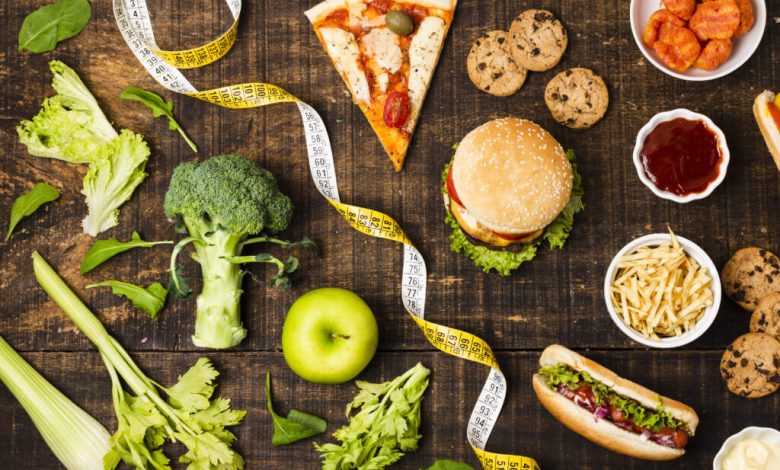Exploring Food Alternatives: The Future of Sustainable and Healthy Eating 2025

Table of Contents
In recent years, food alternatives have gained traction as people increasingly seek out healthier, more sustainable, and ethically produced food options. This shift has not only been driven by personal health concerns but also by the growing awareness of environmental degradation, climate change, and animal welfare. The need for food alternatives has never been more apparent, as the global food system faces unprecedented challenges such as resource depletion, the rising cost of animal agriculture, and a greater push for sustainability.
In this comprehensive guide, we will explore what food alternatives are, why they are important, the various types available, and how they’re transforming our food choices. Whether you’re someone interested in reducing your environmental impact or simply seeking to diversify your diet, this article will offer valuable insights into the role food alternatives can play in your lifestyle.
What Are Food Alternatives?
Food alternatives are essentially products or ingredients that serve as substitutes for traditional animal-based or conventional food products. These alternatives can be plant-based, synthetic, or derived from other innovative sources like algae or fungi. They are designed to meet various needs: some offer more sustainable options, others address dietary restrictions, and some provide healthier alternatives to processed or high-calorie foods.
These food alternatives aim to mimic the taste, texture, and nutritional profile of the original item, so you don’t have to sacrifice flavor or satisfaction while making healthier or more sustainable choices.
Examples of Food Alternatives:
- Plant-Based Meat: Examples like Beyond Meat and Impossible Foods have gained popularity by offering burgers, sausages, and other meat-like products without using any animal products.
- Non-Dairy Milk: Milk alternatives such as oat milk, almond milk, soy milk, and coconut milk provide lactose-free options that cater to people with dairy allergies or those following vegan diets.
- Alternative Grains: Quinoa, buckwheat, farro, and amaranth are nutritious, gluten-free grains that provide an excellent substitute for wheat-based products.
- Edible Insects: High in protein and low in environmental impact, edible insects are considered by some as a future food alternative to meat.
- Lab-Grown Meat: Cultured meat, produced by cultivating animal cells in a lab environment, provides an alternative to traditional livestock farming.
Why Are Food Alternatives Gaining Popularity?
The rapid rise of food alternatives can be attributed to various factors that span health, ethical, environmental, and economic concerns. Let’s take a deeper dive into why these food options are becoming more and more popular.
1. Health Benefits of Food Alternatives
A significant reason behind the growing popularity of food alternatives is their potential health benefits. Traditional meat and dairy products, while high in protein and other nutrients, are also associated with health risks such as high cholesterol, heart disease, and certain cancers when consumed in excess. As a result, many consumers are turning to plant-based alternatives that offer a healthier nutritional profile.
Some health benefits include:
- Lower in Saturated Fats: Plant-based meats are often lower in saturated fats, which can help reduce the risk of heart disease.
- High in Fiber: Foods like legumes, quinoa, and whole grains are rich in fiber, which aids digestion and can help manage weight and blood sugar levels.
- Reduced Risk of Chronic Diseases: A diet rich in plant-based alternatives has been linked to a reduced risk of chronic conditions like type 2 diabetes, obesity, and hypertension.
Additionally, many plant-based foods are naturally rich in antioxidants, vitamins, and minerals, which help boost immunity and overall health.
2. Environmental Sustainability
The environmental impact of food production has become one of the most pressing issues of our time. Livestock farming is a major contributor to greenhouse gas emissions, land degradation, deforestation, and water usage. According to the United Nations, the livestock sector is responsible for about 14.5% of global greenhouse gas emissions. This is more than the emissions produced by all the world’s cars, planes, and trains combined.
Food alternatives, especially plant-based products, offer a more sustainable solution. They help reduce the environmental footprint of food production by:
- Lowering Greenhouse Gas Emissions: Plant-based foods produce fewer emissions than animal products.
- Conserving Water and Land: Growing crops like soy, peas, and lentils requires significantly less water and land compared to raising livestock.
- Reducing Deforestation: As plant-based foods don’t require vast areas of land for grazing, they help protect forests and biodiversity.
Lab-grown meat and other innovative technologies are also being developed to further reduce the environmental impact of food production. Cultured meat, for example, requires far fewer resources and emits significantly fewer greenhouse gases than conventional meat production.
3. Animal Welfare and Ethical Considerations
For many consumers, ethical concerns around animal welfare are a key factor driving their decision to adopt food alternatives. Factory farming, which involves keeping animals in cramped and often inhumane conditions, has raised serious concerns about animal rights. The idea of using animals for food production, particularly in large-scale industrial operations, is being questioned by an increasing number of people.
Food alternatives offer a cruelty-free option to help address these concerns. By choosing plant-based options or lab-grown meat, individuals can align their dietary choices with their ethical values. These alternatives provide a way to enjoy the flavors and textures of meat and dairy without contributing to animal suffering.
4. Culinary Innovation and Flavor Diversity
The days when plant-based products were limited to bland tofu or unappetizing vegetable patties are long gone. Today, food alternatives are being crafted to cater to a wide range of tastes and culinary preferences. Thanks to advancements in food science, we now have options that replicate the textures, flavors, and appearance of traditional meat and dairy products in ways that were once unimaginable.
For example, plant-based burgers now offer a juicy, beef-like experience with a satisfying texture, and dairy-free cheeses are becoming increasingly flavorful and meltable. Innovation in the food alternative sector means that more people can enjoy familiar comfort foods in plant-based forms without sacrificing taste.
These products are appealing not only to vegans and vegetarians but also to flexitarians (those who reduce meat consumption rather than eliminating it completely), environmentally-conscious consumers, and even meat-eaters looking to try new options.
Types of Food Alternatives
The food alternative market is expanding rapidly, and there is a wide variety of alternatives available across different food categories. Let’s dive deeper into some of the most popular and impactful types of food alternatives.
Plant-Based Meat Alternatives
One of the most groundbreaking food alternatives in recent years is plant-based meat. These products mimic the taste, texture, and nutritional content of traditional animal-based meats but are made entirely from plants. The key ingredients in these products are often peas, soy, wheat, and other plant proteins. Plant-based meats are now available in a variety of formats, including burgers, sausages, meatballs, and even chicken nuggets.
Some of the most popular brands leading the plant-based meat revolution include:
- Beyond Meat: Their Beyond Burger uses pea protein to replicate the taste and texture of beef, while their Beyond Sausage offers a similar experience to pork sausage.
- Impossible Foods: Known for their Impossible Burger, which contains soy protein and an ingredient called heme, which gives it a distinctly meaty flavor.
- Oatly: While known primarily for their plant-based milk, Oatly also produces delicious plant-based foods, including oat-based ice cream.
The growing availability of plant-based meat in supermarkets and fast-food chains has made it easier for people to transition to alternative eating without feeling like they’re missing out on their favorite foods.
Dairy-Free Alternatives
Dairy alternatives have become increasingly important as more people choose to reduce their consumption of dairy, either due to lactose intolerance, ethical concerns, or a desire to avoid animal products altogether. The variety of dairy-free options has grown to include alternatives for milk, cheese, yogurt, butter, and even ice cream.
Popular dairy alternatives include:
- Almond Milk: Almond milk is one of the most popular dairy alternatives. It’s light and slightly nutty, making it a great option for smoothies, coffee, and baking.
- Soy Milk: Soy milk has a creamier texture and higher protein content compared to other dairy-free milks, making it a popular choice for cooking and baking.
- Coconut Yogurt: Made from coconut milk, coconut yogurt is often richer and creamier than traditional yogurt and is a great option for those following a dairy-free diet.
Other dairy-free alternatives like cashew cheese, coconut-based ice cream, and plant-based butters have gained traction as well, providing familiar textures and flavors without the dairy.
Alternative Grains and Pseudocereals
Alternative grains and pseudocereals (seeds that are used as grains) have emerged as great substitutes for traditional wheat products, particularly for those following gluten-free or whole-food diets. These grains are typically packed with essential nutrients, offering higher levels of protein, fiber, and micronutrients than refined grains like white rice or pasta.
Some popular alternative grains include:
- Quinoa: Quinoa is a gluten-free grain that is rich in protein, fiber, and essential amino acids. It’s often used in salads, soups, and as a side dish.
- Amaranth: This ancient pseudocereal is a rich source of protein and iron and is gluten-free. It can be used in a variety of dishes, from breakfast porridges to savory grain bowls.
- Farro: A hearty grain that has a nutty flavor, farro is a great alternative to rice or pasta and is a good source of fiber and antioxidants.
These grains not only provide nutritional benefits but also offer unique textures and flavors, making them a versatile addition to your diet.
Lab-Grown Meat
Lab-grown meat, also known as cultured meat, is an innovative solution to the environmental and ethical issues surrounding conventional meat production. Unlike traditional meat, which comes from slaughtered animals, lab-grown meat is produced by cultivating animal cells in a controlled lab environment. This technology uses significantly fewer resources and eliminates the need for animal slaughter.
Brands like Mosa Meat and Memphis Meats are pioneering the production of cultured meat, and it has the potential to revolutionize the meat industry by offering a more sustainable and humane alternative to animal farming.
Although still in its early stages, lab-grown meat promises to significantly reduce the environmental impact of food production while providing a familiar taste and texture to consumers.
The Future of Food Alternatives
The future of food alternatives is bright, as we continue to see new innovations that expand the options available to consumers. As more research and development go into creating better-tasting, more affordable alternatives, it’s likely that food alternatives will become mainstream in the coming decades.
Additionally, as technology advances, food alternatives may be produced on a larger scale and at a lower cost, making them accessible to more people around the world. This could help address global food security issues while reducing the environmental impact of food production.
Conclusion
Food alternatives are reshaping the future of eating, offering sustainable, healthy, and ethical options to meet the needs of a growing global population. Whether you are looking to reduce your environmental footprint, improve your health, or explore new culinary experiences, food alternatives provide a wealth of exciting options. With continued innovation in plant-based meats, dairy-free products, alternative grains, and lab-grown meat, the future of food is sure to be more diverse, sustainable, and accessible than ever before.
By embracing food alternatives, we can create a more sustainable and ethical food system that benefits both people and the planet.


